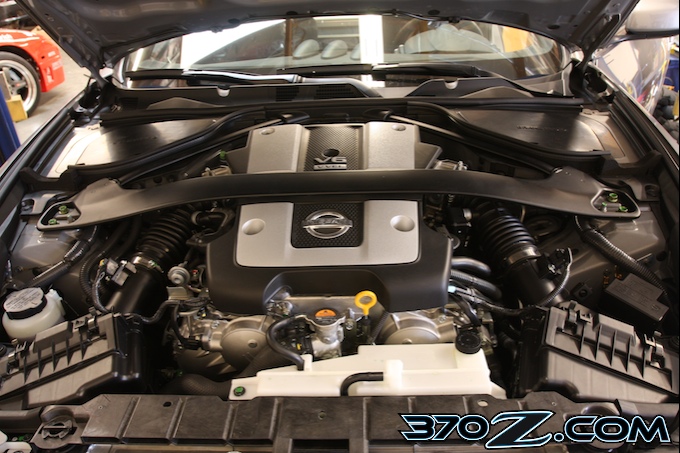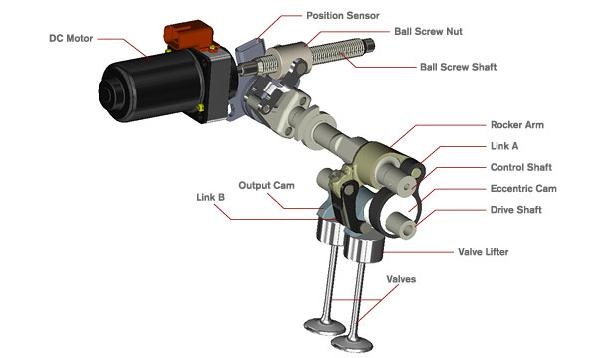Mike Kojima posted on January 02, 2009 06:01

 |
| Never mind that it says Infiniti on the engine cover! This is a VQ37VHR. |
By Mike Kojima, Engineering Editor
The VQ37VHR engine found in the new Nissan 370Z is a marvel of automotive engineering, powerful, clean and efficient, but from a tuner's perspective it is controversial. Although the VQ37VHR is a work of engine design art, we predict that it will be exceedingly hard to modify beyond basic bolt-ons. We'll touch on this subject again later. At a glance the VQ37VHR pulls some impressive numbers pumping out 332 hp @7000 rpm and 270 lb-ft of torque @5200 rpm out of 3.7 liters in the 370Z chassis. That's up another two horsepower from the same engine in the G37 Coupe, probably due to either less restrictive intakes or exhaust in the Z or different marketing department methods of rating power… This is quite an improvement over theVQ35HR's 306 hp and 268 lb-ft found in the last iteration of the Z33 350Z. What is even more impressive is that the engine's torque curve is now much flatter with the engine delivering much more power in the area under the curve, this gives better performance than the numbers alone suggest.
 |
| The VQ37VHR as it sits in the 370Z chassis. The 370Z's triangulated strut tower brace makes for a tight fit compared to the G37. |
The VQ37VHR powering the 370Z is the 4th generation of Nissan's venerable multi award winning VQ engine family. The VQ37VHR's most noted features are VVEL and CVTC --a mouthful of acronyms for Variable Valve Event and Lift, Continually Variable Timing Cam, whew! The VQ37VHR is equipped with this technological marvel of a valvetrain featuring stepless, continually adjustable valve duration and lift on with stepless continually adjustable phasing of the intake cam. What this means is that the intake cam's valve actuation can be varied in how long the intake valves can be held open, how high they can be lifted and how much total inake cam advance, retard and overlap is allowed. All of this can be adjusted on the fly by the engines ECU.
.jpg) |
| Nissan's VVEL valve activating system is very complicated. It does not use a camshaft. |
 |
| To change lift and duration, a stepper motor commanded by the ECU rotates a shaft that moves the fulcrum of a rotating eccentric shaft that works on finger followers that move the valves. The 370Z's VVEL system is like a psycho teeter totter. Fortunately it seems to work pretty well. |
Modify the VVEL System for more power? Want more lift and duration from the VVEL system? Check out our investigation on how to do it here!
http://www.370z.com/MagazineArticles/tabid/57/articleType/ArticleView/articleId/57/Nissans-370Z-VQ37VHR-Cylinder-Head-and-VVEL-Continually-Variable-Cam-Timing-Technology-Technological-Terror-or-Performance-Breakthrough.aspx